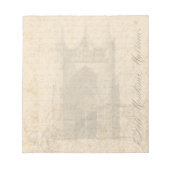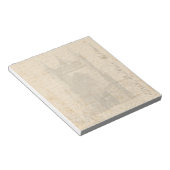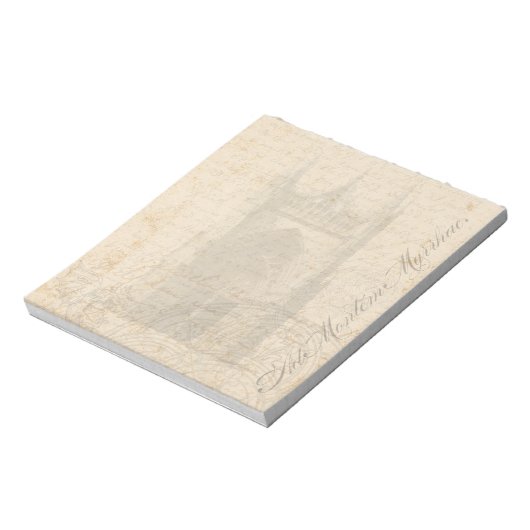A propos de Blocs-notes
Vendu (e) par
À propos de ce design
The vellum details are simulated in the artwork. No actual vellum paper will be used in the making of this product.
Bloc-note Medieval Letterhead - Palimpsest
A palimpsest refers to a manuscript page, typically made of parchment or vellum, from which the original text has been partially or completely scraped or washed away to allow reuse for new writing. This practice was widespread in medieval Europe, primarily due to the extreme scarcity and high cost of writing materials. Parchment, crafted from animal skins, required labor-intensive preparation, making it far more valuable than the ink used upon it. Monastic scribes, facing limited resources, routinely recycled older manuscripts—often erasing works deemed obsolete, heretical, or less relevant (such as pagan philosophical texts, early Christian writings, or administrative records) to inscribe liturgical books, biblical commentaries, or classical literature favored by the Church. The haunting beauty of palimpsests lies in their layered history: traces of the *undertext* frequently resurface over centuries as the surface ink fades or through modern imaging techniques like multispectral analysis, revealing ghostly remnants of the original script beneath the newer *overtext*. Famous examples include the Archimedes Palimpsest (containing erased mathematical treatises) and the Sanaa Quranic manuscript, where early Islamic texts overlay older Christian liturgy.
Beyond physical manuscripts, the palimpsest has become a potent literary and philosophical metaphor for layered identity, memory, and historical erasure. In Gore Vidal’s 1995 autobiography *Palimpsest*, the title directly invokes this concept to frame his life narrative. Vidal portrays his identity as a textual palimpsest: the "overtext" of his public persona—a celebrated novelist, political commentator, and openly gay intellectual—coexists with the "undertext" of suppressed personal histories, hidden relationships, and societal prejudices he navigated. He writes, *"Every act of writing is an act of erasure,"* suggesting that self-revelation in memoir inevitably obscures other truths, much like a scribe’s knife scraping away prior words. The metaphor extends to cultural memory itself: Vidal implies that history is never cleanly overwritten; fragments of marginalized experiences (queer lives, political dissidence) persist beneath dominant narratives, demanding reinterpretation. This literary use transforms the medieval artifact into a lens for examining how power dictates what is preserved or erased—and how the past relentlessly haunts the present.
I couldn´t help but insert my family´s coat of arms motto "Ad Montem Myrrhae" on the right-hand side, which is a line from the biblical Song of Solomon.
Created with Venice.ai, Canva & love.
Avis des clients
5.0 sur 5 étoiles1 Nombres de Commentaires
1 Commentaires
Avis sur des produits similaires
5 sur 5 étoiles
Par Sandrine P.2 mai 2022 • Achat sécurisé
Blocs-notes 14cmx15.2cm - 40 pages
Programme d'évaluation de Zazzle
propre & classe, fait tres pro. correspond à l image, brillant & classe
Tags
Autres infos
Identifiant du produit : 256079775032115858
Fabriqué le 11/10/2025 20:02
Évalué G
Articles vus récemment


